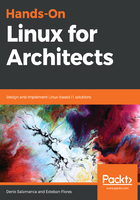
Brick layout
Having a node with all of its disks in a single large brick does not perform in the same way as having disks grouped in smaller numbers with several bricks. Brick layout is the highest contributing factor to performance, as this directly dictates how disks are used.
If all the disks end up in a single brick, the performance suffers. Generally, having more bricks with fewer disks results in better performance and lower latency.
Consider configuring a software RAID0 for the disks that make up the bricks. For example, you could have 10 disks available and, for simplicity's sake, configure all 10 disks in a RAID0 on a single brick. Alternatively, you could go for a more efficient route and configure five bricks where each brick is made of two disks in a RAID0.
This also allows smoother growth, since adding more bricks with fewer disks is considerably easier than adding a large number of disks. You should aim for more bricks with fewer disks grouped in smaller RAID configurations.
In the following diagram, we can see how each brick is made up of two different disks:
